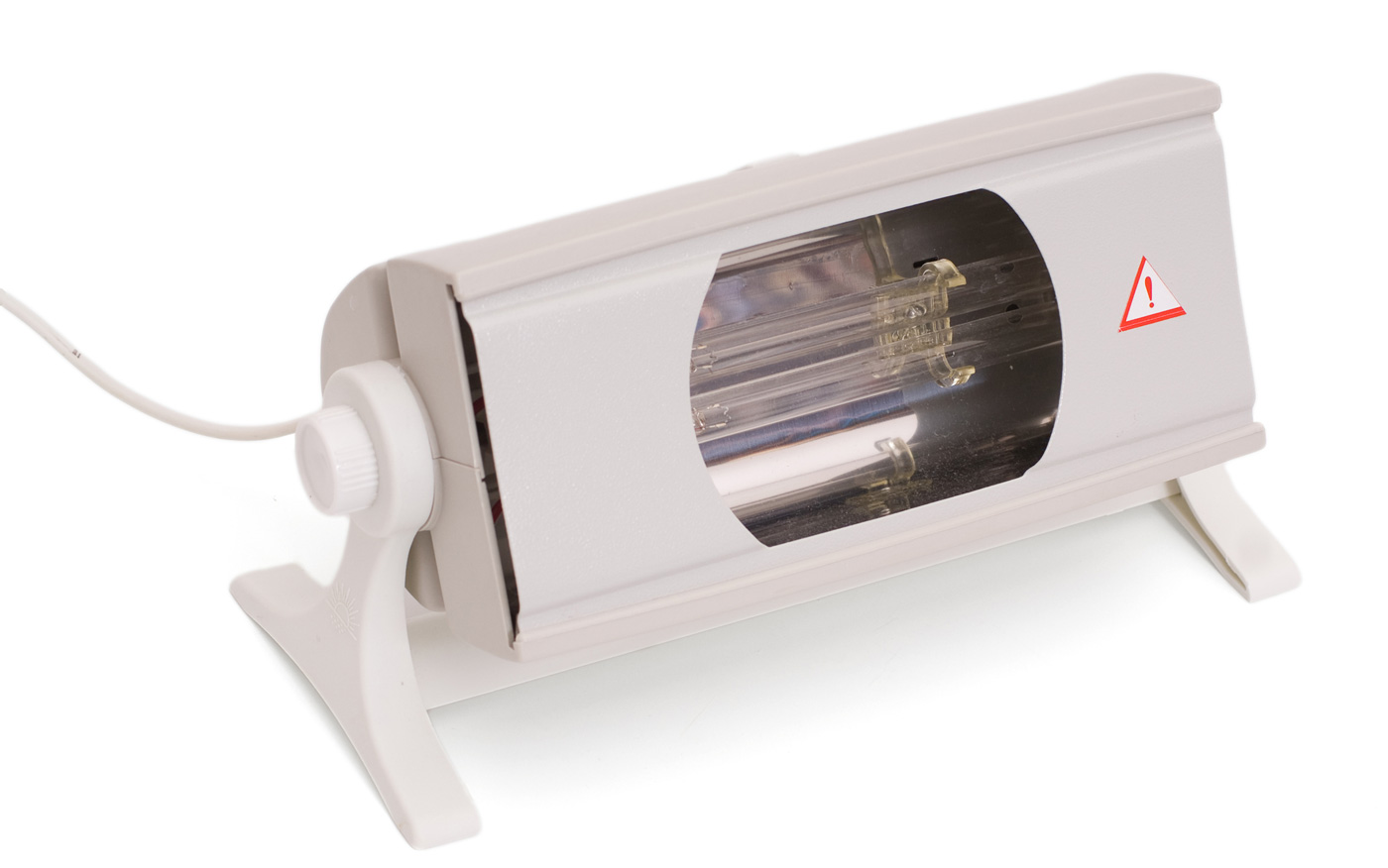Ultra violet radiation has a range of wavelengths from 400nm to up to 10nm. However, the usable range is from 400nm to 200nm.
- Long wave U.V. lamps: 410nm to 300nm range.
- Short wave U.V. lamps: 300nm to 200nm range.
Uses of ultra violet lamp:
- To detect fluorescence and phosphorescence.
- At times to distinguish between natural and synthetics.
- Gives an idea about colouring elements present in the stone.
- Detect treatments done on the stones.
Procedure:
- Place the stone on a dark background within a viewing cabinet and note the type of radiation used – whether long wave or short wave.
- The stone should be held close to the ultra violet source of radiation, at a constant distance.
- Observe the fluorescence/ phosphorescence in the dark.
- Analyze the stone in different directions and observe the external and internal reactions in the stone.
- Note the stone’s reaction and check the intensity and colour of fluorescence.
- If the stone glows, it is fluorescing; if not, it is Inert.
- Some stones continue to glow after the radiation is cut off. This effect is called phosphorescence.
Precautions:
- Do not look directly into the unit because it will make your eyes burn.
- Avoid holding the stone with your fingers or tweezers.
- Transparency of the stone should be considered. Some opaque and transparent stones of the same species, will give different reactions.
- Fluorescence may vary from one stone to the other because of chemical impurities, strain in the structure, matrix or other foreign material.
Limitations:
- This is not a confirmatory test. It should be considered as an indicative test.
- Prolonged exposure to ultra violet radiation is harmful.
Common Fluorescent Colours
| Stone | Short Wave | Long Wave |
|---|---|---|
| Fluorite | Strong Violet | Violet |
| Synthetic Sapphire (color changing) | Chalky Orange | Violet / Orange |
| Natural Blue Sapphire | Inert | Inert |
| Synthetic Blue Sapphire | Chalky | Inert |
| Moonstone | Pinkish | Inert |
| Synthetic Blue Spinel | Chalky Blue | Strong Red |
| Ruby | Strong Red | Moderate Red |
Luminescence: Some minerals when irradiated or acted upon by other external factors can emit light. The ability to do this is called luminescence. It may be exhibited when the mineral is subjected to:
- Ultraviolet rays, visible light rays (photoluminescence),
- X-rays or cathode rays (X-ray or cathodoluminescence),
- Mechanical deformation (triboluminescence) etc.
Luminescence is characterised by:
- colour
- intensity
- excitation
- duration
Luminescence is linked to lattice disturbance especially due to the presence of foreign ions which function as activators. When subjected to excitation by ultraviolet light or x-rays, the electrons in the activators absorb a quantum of energy and are raised to a higher excited level. Subsequently, when the irradiation source is switched off, they fall back to their ground level and the energy which is released is in the form of the appropriate wavelength electromagnetic radiation.
- This emitted radiation is always of a longer wavelength than that of the original excitation. It is known as fluorescence. The substance ceases to luminesce when the source of irradiation is switched off.
- If, however there is an observable delay before the electrons gives up their surplus energy by emitting light, the phenomenon is called phosphorescence, i.e. if the luminescence continues for a noticeable period after the irradiation source is switched off. This is an ‘after-glow’ effect. In this case the release of energy occurs in two steps with a lag effect.
- Both fluorescence and phosphorescence are grouped under the common heading “photoluminescence” to distinguish it from luminescence caused by other forms of energy such as heat or friction.
- The fact that the emitted radiation is always of a longer wavelength than that of the applied radiation is of prime importance. It means that visible light is often emitted by a gem mineral when it is irradiated by a source having a much shorter wavelength, such as ultra-violet light or X-rays.
- With some gemstones (natural and synthetic), even the short wavelength visible light in the blue / violet end of the spectrum will result in the emission of a longer wavelength of red light.
- The colour and intensity of the luminescence of minerals are of various natures and cover a wide range with different kinds of mineral species. Minerals are known to show violet luminescence (fluorite), blue (scheelite), orange (sodalite) or red (ruby).
- Cases are not rare when one mineral can luminesce in different colours, e.g. calcite is found to have red, orange, yellow, green or light blue luminescence.




























Leave a Reply
You must be logged in to post a comment.